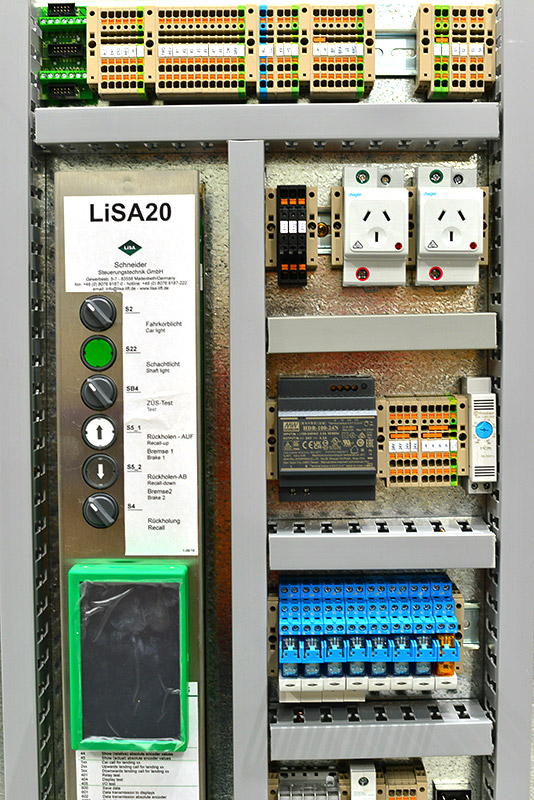The following information is general in nature but it will assist customers in understanding a modernisation quote. Lift consultants can be engaged to assist with the specifying of a modernisation, however, they are expensive and their expertise varies significantly.
Quality equipment is essential to ensure ride quality and longevity. The other main consideration is, can the equipment be maintained by a wide range of lift companies or are you locked in with the modernisation company for many years for maintenance and repairs? The following guide will assist a company in determining if they are getting a quality job:
The electrical control system:
There are a range of German designed controllers that have an open IT platform. Melbourne Elevators has been working with the LiSA controller from Schneider for 17 years. The German architecture enables quick diagnosis and repairs compared to most other systems, this saves the customer money. German controllers are actually cost-effective in the long term despite a higher initial purchase price.
Traction lift motors:
In our experience, the Ziehl-Abegg from Germany is pure quality. Our experience with these machines goes back over 20 years, we are yet to have an issues with any of them! There are a range of other German supplies as well as some quality suppliers from Italy, such as Sassi. If using an alternative to German or Sassi equipment, my advice is proceed with caution.
VVVF Drives:
A lift drive in a traction lift controls the power to the lift motor to create a smooth acceleration and deceleration. This is a highly complex and expensive piece of equipment. It is a good idea not to have the Drive built into the controller as they produce significant heat. There is a modern trend to build drives into controllers to reduce the initial purchase price, to replace a drive you generally have to replace the controller as well. A long lasting VVVF Drive we recommend is the Zetadyn from Germany.
Doors:
There are two main door manufacturers that are used in most modernisations. Fermator is a Spanish manufacturer who makes a rage of doors. If using Fermator specify the 40/10 model as the minimum specification, as Fermator have a wide range of doors from the budget to the heavy duty. The most highly regarded doors are the AMD from Wittur, Germany. Again, it is important to select the high end AMD doors such as the Supra range or above.
Lift buttons:
The benchmark lift button company is Dewhurst from the UK. Most lift consultants and the wider industry specify these buttons.
Hydraulic valve blocks:
There are a wide range of hydraulic manufacturers who produce reasonable equipment. Our technicians who have designed and manufactured lifts recommend the Blaine valve blocks from Germany or the Swiss Bucher electronic valve blocks.
There are many components that are combined to create a modernisation that have not been mentioned, however, the above is a good guide to determining quality.

Quality European manufactured components














